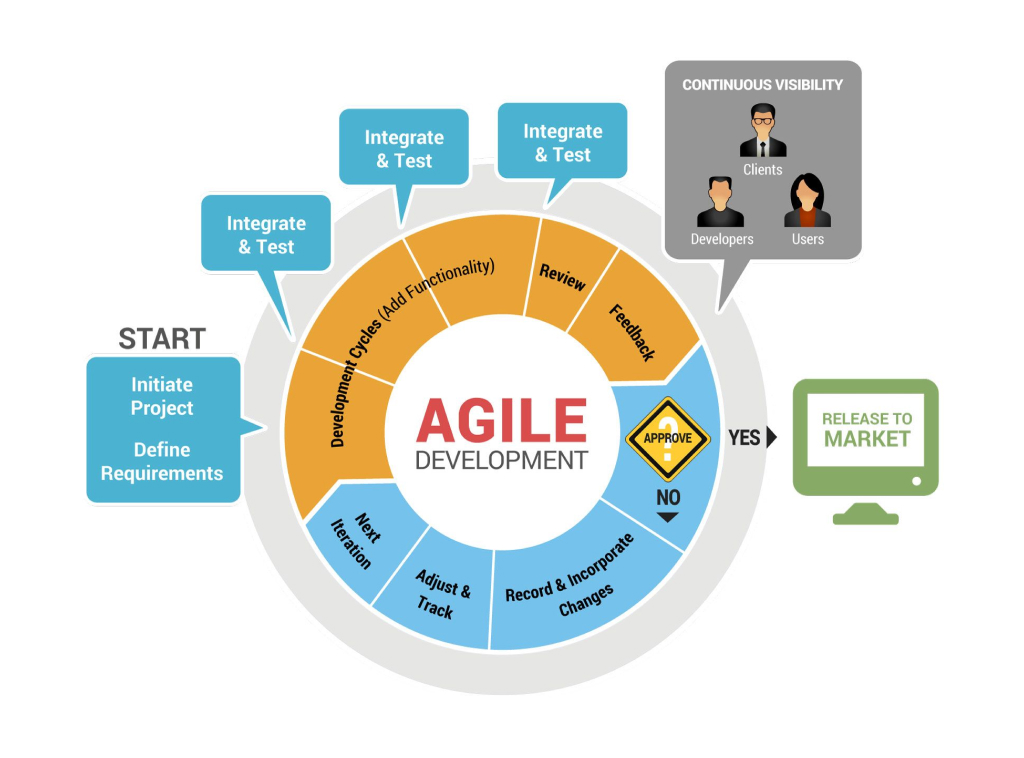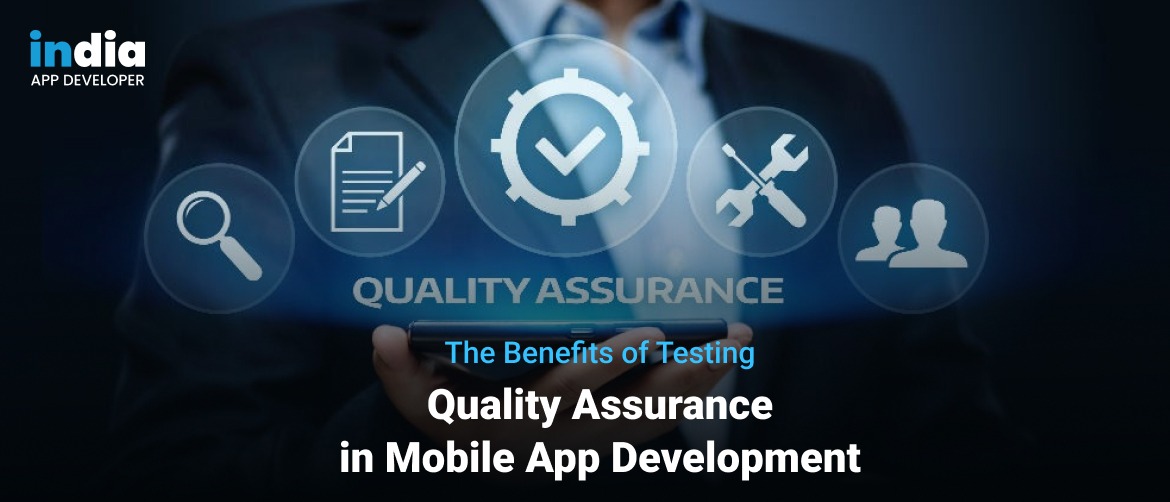Agile software development has been a market staple in the last decade. Successful software developers use agile methods to create real-world tools and techniques. Traditional software development difficulties and limits are no longer recognized.
70% of software developers use Agile, per PMI. Agile methodologies focus on rapid and frequent partial solution deliverables that can be validated and used by project teams to identify their next steps. Agile has become a popular programming approach. Read on for a step-by-step guide to agile software development. Everything is explained.
Agile Methodology Definition
Agile method definition: Software developers adopted agile project management early. It’s used when self-organizing, cross-functional teams and their users collaborate to solve problems.
Agile encourages adaptability and flexibility. Agile improves company responsiveness by allowing teams to deliver in reasonable increments.
When a project is split down into smaller, more manageable parts, it’s easier to finish.
It grew from the Agile Manifesto’s values and concepts as a response to the Waterfall method’s limitations. Because software can be updated, it’s a very competitive industry. This means engineers must constantly modify and reinvent their products to be competitive, and the Waterfall process wasn’t working.
What is Agile Methodology in Software Development?
It would be an understatement to say that Agile has changed the software development industry, but it has. Agile methodology is an iterative way to build software. Developers can use a variety of Agile methods to plan releases, work in time-bound “Sprints,” iterate based on user feedback, and deliver working software more often.
The iterative and incremental nature of the agile method means that even on the biggest projects, a lot of progress can be made.
Agile is a way of working that emphasizes constant delivery and clear communication between all parties.
Agile SDLC (software development life cycle) creates a tight “feedback loop” between developers and customers. This lets teams respond quickly to market needs and customer expectations, work well together, and speed up development.
Agile methodology was made by a group of programmers who didn’t like the traditional way of making software because it took too long and had too much paperwork.
What is an agile philosophy?
Agile with a capital “A” and agile with a small “a” are two different concepts. Some people believe that until you follow a certain framework or set of rules, you can’t be truly nimble.
Agile thinkers should be open to adapting methods, pragmatic about processes, and tolerant of the untidy reality of how people plan and execute. Adopting a flexible mentality and continuously looking for ways to enhance workflow is what matters in order to increase the value delivered to clients.
Being nimble, according to the definition, is being “prepared to move with quick, effortless grace.” That’s undoubtedly a compliment that any club would appreciate. Not to mention, each group must decide on its plan of action for obtaining swift and easy grace.
Where did agile come from?
The waterfall methodology, which was developed for manufacturing and later adopted for software development, had flaws that inspired agile solutions. Since 2001, agile development has thrived in the software industry and project management.
Many software engineers noticed that waterfall’s production cycles and collaboration mechanisms were ineffective. It was common in the early 1990s to wait years between proving a business need and delivering a functional solution. Large parts of the software may be abandoned if business demands and market conditions change during development. Many programmers stopped doing it since it was a waste of time and money.
Plans for digital transformation assist businesses in keeping up with rapid development and disruption. Agile software development is frequently essential.
Many digital workflows nowadays are built on agile principles. The IT architecture of cloud computing is versatile and adaptive, allowing for agile software development. When developing software for the cloud, developers see it as a collection of scalable services.
DevOps is the combination of software development and operations. SRE uses software to manage systems and automate operations. CI/CD techniques, which prepare for software evolution, enable developers to deploy code more quickly.
The term “agile approach” refers to a procedure that adjusts to the changing needs of its customers (in this case, software developers). Keep this in mind while we examine a few agile frameworks, each of which has a unique name and may appear to be different when applied.

The Agile frameworks
The Agile framework is a way of planning and executing projects. There are two sorts of Agile frameworks: those designed specifically for teams and those designed to help bigger enterprises deploy Agile across several teams.
To help you choose the right Agile framework for your needs, we’ve given brief explanations of the most popular options below.
1) Kanban
Kanban is a Japanese word that means a signboard or visual board, and it is also the name of an Agile methodology. The Just In Time (JIT) approach is related to the Kanban philosophy. Kanban first appeared as part of the Lean Manufacturing System, and only later did it make its way into Agile software development practices. Kanban is a framework for managing and developing projects that makes use of visual features.
The Kanban Board is responsible for monitoring the progress of any Kanban-based projects. Kanban Boards typically have several columns to accurately portray software development workflow. By allowing everyone on the team to see what is and isn’t progressing, this method improves transparency and allows everyone to better prepare for what needs to be done to successfully deliver the product to the customer. It should be noted that in order for this strategy to effectively build a product, it will necessitate open communication and collaboration among the team members.
In order to function, Kanban relies on the following three tenets:
- Understanding the actions that need to be taken at any given moment.
- Setting limits on the amount of work the team can take on at once so that they don’t get overwhelmed.
- Increasing productivity just before a task is finished, allowing for the addition of a new task to the queue.
2) Scrum
Scrum is a popular Agile framework. Scrum, as opposed to Kanban, separates a single project into smaller portions called “Sprints,” each of which is independently planned and controlled. Scrum projects only have roles like Product Owner, Scrum Master, and Developer.
Scrum commonly uses a Scrum Board, which is quite similar to a Kanban Board, to organize tasks into several columns based on their overall progress.
The Scrum framework includes the following steps:
- The Product Backlog is the Product Owner’s estimated wish list.
- The Scrum Team will choose a few items from the top of the list to generate product increments, which they will refer to as the Sprint Backlog. Following that, everyone will begin working on cleaning out the Sprint Backlog.
- Every day, everyone working on the project gathers to discuss how to best coordinate their activities for the day.
- It is the Scrum Master’s responsibility to ensure that everyone on the team is paying attention.
- Before the start of the next Sprint, each Sprint will conclude with a review of the completed Increments and the giving of constructive comments.
3) Lean
Although Lean is one of many various types of Agile frameworks, many people confuse it with Agile when they shouldn’t. Both have many design similarities, yet they are not the same. Lean is an abbreviation for “Lean Manufacturing,” a set of management principles developed by the Japanese in the twentieth century to increase productivity while reducing waste. The Agile Manifesto, on the other hand, was written in 2001.
The following are the pillars of Lean principles:
- The value stream is being mapped.
- Finding out what’s important.
- By implementing a pull system.
- Creating a continuous process.
- The never-ending pursuit of improvement.
Lean Software Development, one of the most extensively used Agile frameworks, encompasses all of the aforementioned principles. The essential ideas of Lean were then reduced to their essence, as follows:
- Quickly provide.
- Save time and money by not squandering them.
- Decency must be shown to others.
- Make new use of your knowledge.
- Excellent construction.
- Optimization.
- Make no long-term commitments right away.
Lean can help businesses by eliminating any stages that aren’t directly contributing to their performance and doubling down on the ways that have shown to be the most effective with their existing strategy. To “reduce waste,” a company may minimize the number of meetings it conducts, the number of documents it produces, and the number of tasks its personnel undertakes that does not directly boost productivity. Furthermore, Lean values workers and promotes teamwork. Workers should be handled with the highest respect since each member of a team should understand his or her role. As a result, workers have trust in one another.
4) DSDM or Dynamic Systems Development Method
When the entire software industry needed an Agile framework to aid in quick software delivery, DSDM was born out of need. In DSDM, changes made to a product after delivery are expected, and any changes made to the code base after delivery must be undoable. The DSDM framework also employs Sprints, much like Scrum.
The DSDM technique is founded on the following concepts.
- Display authority.
- Take note of what the company requires.
- Collaborate.
- Maintain a continuous pattern of on-time delivery.
- The development process should be iterative.
- Quality should not be compromised.
- Lay a strong foundation.
- You must keep lines of communication open at all times.
5) XP or Extreme Programming
Extreme Programming is one of the most well-known Agile software development approaches. Both developers and customers must participate actively in this process. Customers will be held accountable for driving future product growth by emphasizing the most valued characteristics of the product in several testimonials. The Developers, on the other hand, will base every update on user feedback, while also testing out experimental features every few weeks.
It is critical to understand that XP has weaknesses. The strengths of XP are its emphasis on teamwork and minimal paperwork. Furthermore, it is a dependable and efficient way of delivery.
When considering the disadvantages of XP, it should be highlighted that for this process to be successful, it requires significant discipline and participation from all parties. Furthermore, XP works best in smaller teams with highly qualified and experienced Developers who have a track record of success in management and communication.
The following values underpin the XP methodology:
- Endurance
- Communication
- Feedback
- Simplicity
- Uniformity
6) FDD or Feature Driven Development
FDD is an Agile approach designed primarily for software development. Specific software models are produced every two weeks in this framework, and the design and development process is planned for each model. FDD demands significantly more thorough documentation than Extreme Programming, making it ideal for teams with excellent planning and design skills.
This section will walk you through the steps of FDD.
7) Crystal
- Crystal, a lightweight Agile framework bundle, includes the following frameworks:
- Crystal Yellow (10-20 person team)
- Crystal Clear (Teams up to 8 people)
- Crystal Red (20-50 person team)
- Crystal Orange (50-1000 person team)
For each of the aforementioned Crystal varieties, an Agile framework is being built.
The Crystal architecture focuses on talent, community, people, skills, communication, and interactions to ensure that the best software development process is delivered. As a result, the highest level of efficiency can only be realized through open communication and ongoing self-reflection. This paradigm will fail if a team is geographically dispersed and cannot engage in constant communication and reflection.

Why is agile important?
Agile development provides many advantages over the more traditional waterfall development process used in SAP systems.
Every stage of the process is thoroughly planned out in advance with the waterfall technique. Each phase of development—from planning to coding to testing—follows the completion of the previous one. That’s fine as long as the outcomes are known ahead of time. Unfortunately, not very often. If design flaws are uncovered during the coding process, the project may require extensive changes (or perhaps the testing phase).
Because waterfall projects can take a long time, it is difficult for organizations to adjust quickly to new priorities. By the time the software is released, the needs of the end customers may have changed. It can be tough for firms to remain competitive when minor updates are spread out over several months.
One advantage of employing an agile methodology when developing software is that it helps us to:
- Provide value quickly: The most pressing requirements may be fulfilled much more quickly. A waterfall paradigm does not allow for progress until all components have been built and tested.
- Reduce uncertainty by: The agile method is adaptive and even encourages requirement volatility. It recognizes that software development is an iterative process and that establishing all criteria beforehand is not always possible.
- Reduce the risk and damage: While making incremental changes, there is less risk of damage. When the scope is reduced, it becomes easier to test and foresee any problems. It is preferable for users if little updates are released regularly as opposed to huge ones that are released infrequently.
- Priorities must be established and currency must be maintained: An agile team determines which user stories to work on throughout each sprint based on the current business priorities.
- Make careful you don’t overdo it: It is easy to track costs because final goods are frequently supplied in an agile setting. Keeping track of spending is substantially more challenging in a long development project where nothing is disclosed until the very end.
- Spread the word more effectively: Increasing the frequency with which working features are provided, as well as collaborating with the business to enhance visibility and comprehension across the organization.
Agile software development principles
The Agile Software Development Manifesto is founded on twelve principles:
- Complete client satisfaction is achieved by the timely and continuous supply of high-quality software.
- Recognize that needs can change even late in the development phase.
- Stable code should be released regularly (within 2 to 4 weeks).
- Daily collaboration between business people and developers.
- People who are self-motivated and trustworthy lay the groundwork for successful undertakings.
- Two people should interact in the same physical place (collocated teams).
- The fundamental goal should be to provide functional software.
- Progress can be sustained at a constant rate over time.
- At all times, maintaining a high level of technical skill and design quality.
- Maximizing the amount of work that is not done is an art that must be mastered if simplicity is to be prioritized
- Superior architectures, needs, and designs result from collective intelligence.
- The crew is always looking for ways to improve their performance.
Summary
Overall, the Agile concepts serve as the foundation for a wide range of models and approaches to software creation. In recent years, the number of businesses citing the methodology’s effectiveness has increased. Agile has been adopted and appreciated by some of the most well-known personalities in journalism, technology, finance, and even some branches of the national government.
Is your organization prepared to adopt Agile methods? Products for implementing Agile in large organizations are available from India App Developer.
Simply get in touch, and we will lend a hand with the transition.




























